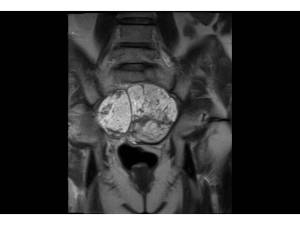A non-fault diagnostic error? A second neoplasia “mimicking” metastases
Dr. Mark Graber specified the categories of factors contributing to diagnostic error. Non-fault diagnosis, is present when a correct diagnosis may not be immediately apparent due to special difficulties, because there is not a definitive or an unusual test for diagnosis is needed or the clinical case is related to a very uncommon disease… What do you think about these two clinical situations?
FIRST CLINICAL CASE: A 55-year-old man had a diagnosis of localized high-risk prostate cancer three years ago. He was treated with external pelvic radiotherapy. One and a half year later he started with strong back pelvic pain and an increase in the PSA level. A bone scan was negative. We show here the simple pelvic X-ray:
CLINICAL EVOLUTION: The clinician in charge of the patient thought about bone metastases from prostate cancer. She indicated hormonal treatment and analgesics but the pain was worst everyday . A MNR showed a big lump on the sacral area.
FINAL DIAGNOSIS: CORDOMA
SECOND CLINICAL CASE: A 60 year-old man had a diagnosis of locally advanced rectal cancer. He had a big tumor also in the sacral area detected at the initial diagnosis that was associated to bone metastases. He received external pelvic radiotherapy with an initial reduction in both tumor location, rectum and sacrum, and posterior chemotherapy.
CLINICAL EVOLUTION: The patient improved initially but several months later he started to feel strong pain and there was not major changes on the size of the sacral tumor even during the chemotherapy treatment.
A biopsy of the sacral tumor was made.
FINAL DIAGNOSIS: CORDOMA
COMMENTS: Cordoma is an uncommon tumor originated on the extradural space. The sacrum is affected in 50% of cases. Surgery is the cornerstone of the treatment but usually is not possible to resect the whole tumor. Radiotherapy is normally used after incomplete surgery.
The delay in the diagnosis of these two cases of sacral cordoma could be considered as a non-fault diagnostic error due to the concomitant presence of two other tumors with common pelvic metastases.







